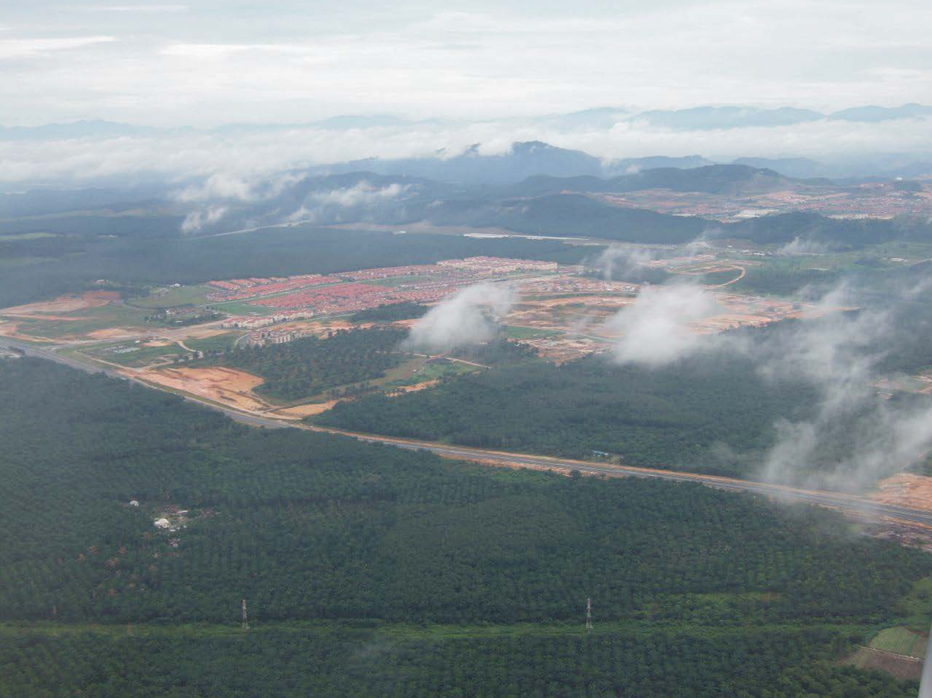Animal Agriculture - A Burden on the Environment
Dr. Jina Shah (MD, MBE, MPH), Dr. Pratik Bhansali (PhD)
Our planet is going through a huge climate crisis. It is no longer a concern but an ongoing existential crisis that is much larger and more immediate than what many of us think. The wellness of all beings is under severe attack. There is overwhelming evidence and consensus among climate scientists that animal agriculture is a leading cause of greenhouse gas emissions, deforestation, species extinction, loss of biodiversity, water body pollution, etc. Animal agriculture is very resource-intensive in terms of land and water use. Following are only some of the disastrous effects of animal farming, including dairy, on the environment and resources.
Dairy and meat are the leading causes of global deforestation. This is because land needs to be cleared for grazing, growing feed for the animals, and managing waste.
It takes about 1,000 liters of water per liter of milk production. This is because so much water is required to grow crops to feed the animals, for flushing manure, and for the consumption of the animals.
In 2017, 909 tonnes of milk were produced in the world (20% of this comes from India)[1].
About 278 million cows are being used in the dairy industry worldwide.
India is the largest producer of dairy, with the combined number of cows and buffaloes being close to 300 million in 2019[2].
This takes away an enormous amount of land, water, and food, which affects all of us in addition to the animals. The harm caused to marginalized communities is disproportionate. This makes it even more important for people with access to the information to take a step in the right direction and prohibit the consumption of dairy.
The waste generated from the dairy and meat industries also results in water body pollution, risking marine life and further worsening the already acute water shortage. This waste is disproportionately released in or passes through the localities of marginalized people. This makes these industries big contributors to environmental discrimination.
Keeping animals as livestock is responsible for 65% of all human-related emissions of nitrous oxide—a greenhouse gas with 296 times the global warming potential of carbon dioxide, which stays in the atmosphere for 150 years[3].
We are in the 6th major extinction, a grave situation in our planetary history[4]. Thousands of humans die every year due to hotter conditions and extreme heat events. Between 2030 and 2050, climate change is expected to cause approximately 250,000 additional deaths per year from malnutrition, malaria, diarrhea, and heat stress[5].
Most of the extra CO2 and heat have been absorbed by the oceans, creating stress and dangerous living conditions for marine life[6]. With sea levels rising due to melting glaciers and hotter ocean temperatures, low-lying areas are flooding. Warmer ocean temperatures are also adding extra energy to hurricanes, making them ever more destructive[7]. Forests are getting drier, and wildfires are becoming increasingly more prevalent and destructive[8]. These climatic changes cause people and animals to be displaced. Mass displacement and migration could challenge societies worldwide.
Climate change affects social and environmental determinants of health—clean air, safe drinking water, sufficient food, and secure shelter. Air pollution, increased allergic and asthma symptoms, decreasing food security, and mental distress are health consequences caused or exacerbated by climate change[9].
In addition, changes in the climate have already altered the geographic distribution of pathogen-carrying mosquitoes and increased the risk of diseases such as malaria, West Nile, dengue, and Zika viruses[10].
The principal tenet of conduct followed by Jains is that of Ahimsa, or non-violence to any living being. As a result, practicing Jains are vegetarians and have a long history of building sanctuaries for injured animals. Jain teachings prohibit Jains from engaging in professions that harm plants, animals, and the earth. Another key tenet followed by Jains is Aparigraha (non-possessiveness), to limit one’s consumption and material possessions, which form the basis of modern-day minimalism. Ahimsa and Aparigraha, as taught and traditionally practiced, have great relevance to the climate crisis. Parasparopagraho Jivanam[11] means all life is bound together by mutual support and interdependence. It is not only the human perspective that we must consider, but those of all living beings. Therefore, it is important to live in harmony and not attempt to dominate nature or other living beings. We need to act now, so we can avert catastrophe and take better care of our world. Readers are further encouraged to read and endorse the ‘Jain Declaration on The Climate Crisis (2019)’[12][13] and consider performing a Climate-Focused Pratikraman[14].
References
WWF. Milk's impact on the environment. World Wildlife Fund. Retrieved from https://www.worldwildlife.org/magazine/articles/milk-s-impact-on-the-environment
NDDB. Livestock population in India by species. National Dairy Development Board. Retrieved from https://www.nddb.coop
Food and Agriculture Organization of the United Nations. (2006). Livestock's long shadow: Environmental issues and options. Retrieved from https://www.fao.org/3/a0701e/a0701e00.htm
National Geographic. Mass extinction. Retrieved from https://www.nationalgeographic.com/science/prehistoric-world/mass-extinction/#close
World Health Organization. Climate change and health. Retrieved from https://www.who.int/news-room/fact-sheets/detail/climate-change-and-health
Intergovernmental Panel on Climate Change (IPCC). (2014). Climate change 2014: Synthesis report. Contribution of working groups I, II and III to the fifth assessment report of the intergovernmental panel on climate change (Core Writing Team, R. K. Pachauri & L. A. Meyer, Eds.). IPCC. https://doi.org/10.1017/CBO9781107415324
UCAR Center for Science Education. Hurricanes and climate change. Retrieved from https://scied.ucar.edu/hurricanes-and-climate-change
IPCC. (2014). Figures 2.4 and SPM.4 in Climate change 2014: Synthesis report. Contribution of working groups I, II and III to the fifth assessment report of the intergovernmental panel on climate change (Core Writing Team, R. K. Pachauri & L. A. Meyer, Eds.). IPCC, Geneva, Switzerland. Retireved from AR5 Synthesis Report: Climate Change 2014 — IPCC
Centers for Disease Control and Prevention (CDC). Climate effects on health. Retrieved from https://www.cdc.gov/climateandhealth/effects/default.htm
Stanford News. (2019, March 15). Effect of climate change on disease. Retrieved from https://news.stanford.edu/2019/03/15/effect-climate-change-disease/
Tattvārtha Sūtra. Jain aphorism [5.21].
JAINA-JainLink. Climate Declaration. Retrieved from https://jaina.org/climate_declaration
Vegan Jains. (2019, October). Jain Declaration on the Climate Crisis. Retrieved from https://veganjains.com/2019/10/12/jain-declaration-on-the-climate-crisis/
Vegan Jains. (2021, September 10). Climate-focused English Pratikraman. Retrieved from https://veganjains.com/2021/09/10/climate-focused-english-pratikraman/



